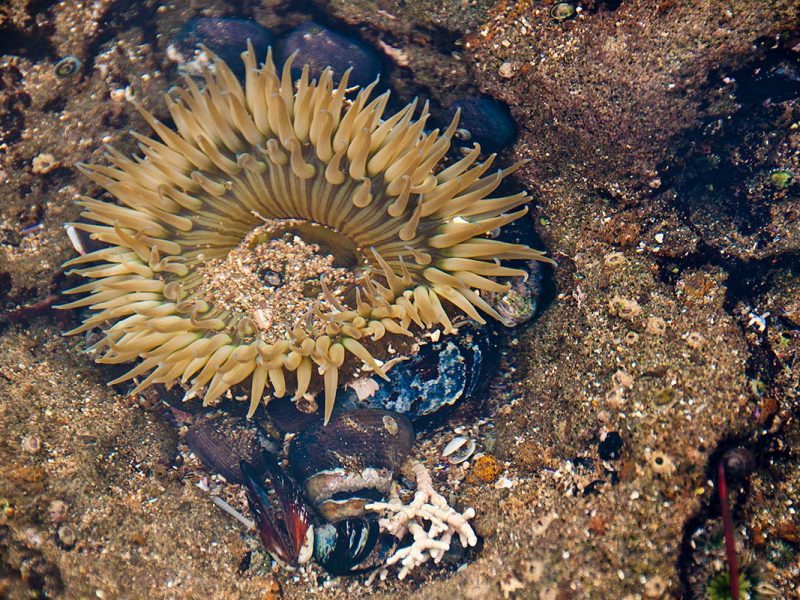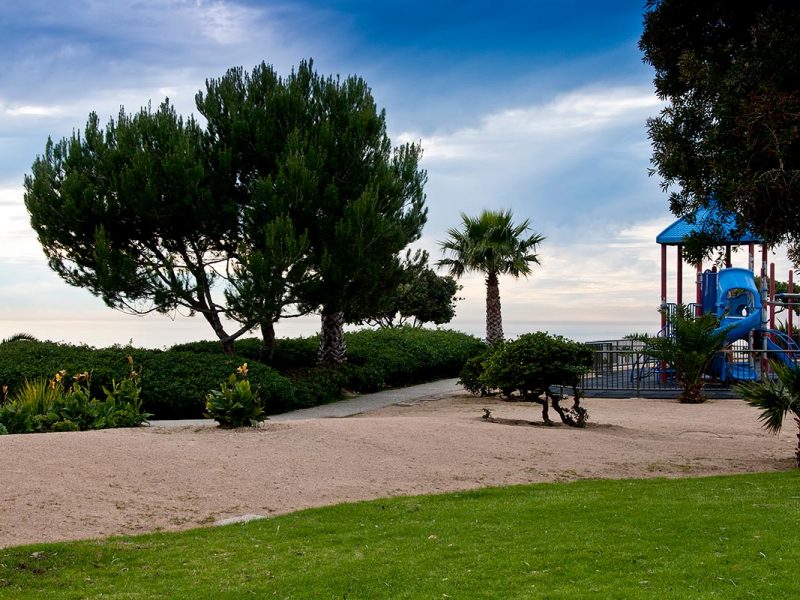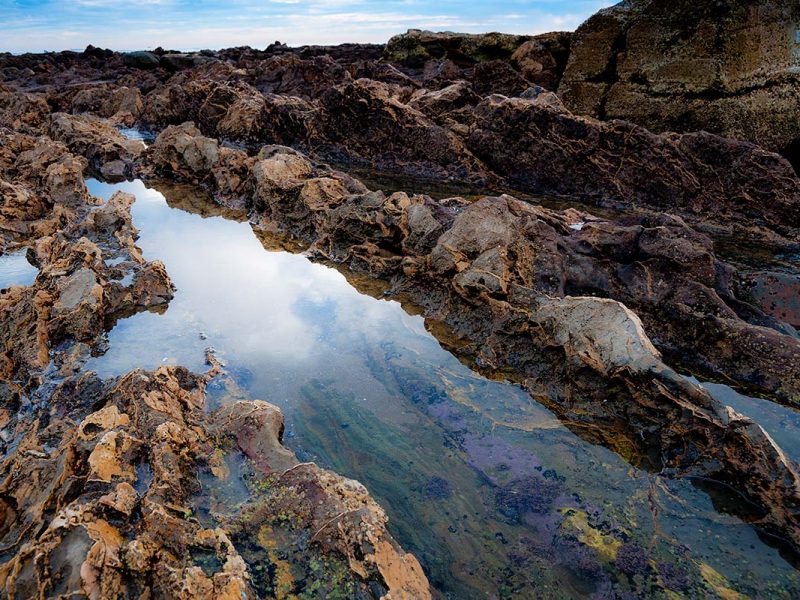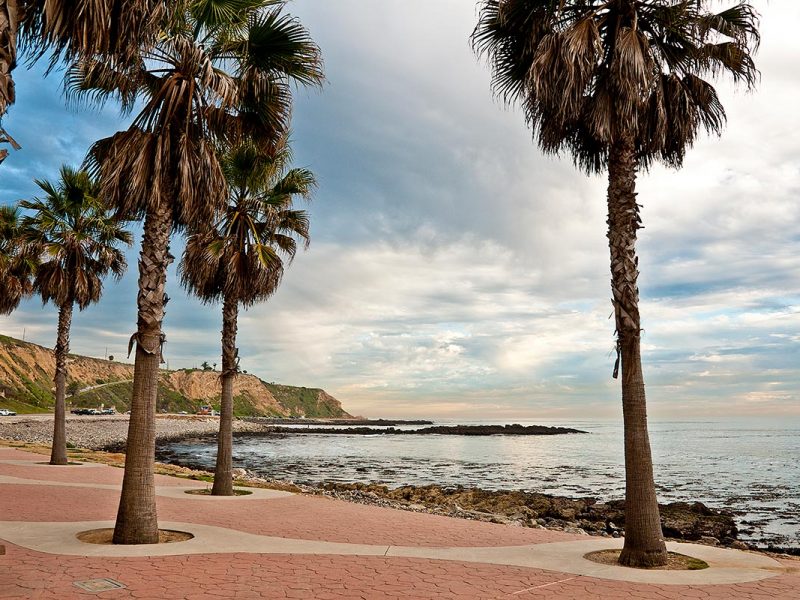LOS ANGELES COUNTY
WHITE POINT / ROYAL PALMS BEACH
VISIT WHITE POINT / ROYAL PALMS BEACH
This beach, with its colorful history, is a great place for a family outing. The bluff portion of this beach has metered parking, ample restrooms, children’s play area, picnic tables, and outstanding panoramic views that include Catalina Island. There are also 12 brass plaques placed throughout the bluff describing the area’s rich history.
The paved road below leads to the actual beach and more parking below. The large patio to the right is what is left of the Royal Palms Recreation Center. Benches shaded by palm trees make this spot perfect for picnics. To the left of the road, White Point offers some of the most diverse tide pools in Southern California. The area itself is great for fishing, surfing, and scuba diving. Swimming is not recommended due to the rocky shore. With over a mile and a half of rocky beach, 30-acres of park area, and plenty of parking, this beach is one of the County’s hidden gems.
BEACH HISTORY
The area known today as White Point/Royal Palms Beach was discovered by Spanish explorers around 1770. They encountered a group of native people later known as the Gabrielino. They were named after the San Gabriel Mission founded by the Spanish. The Gabrielino were a hunter/gather group who lived in small sedentary groups of 50 to 100 people. They relied heavily on plant foods and meat from marine resources. With the Spanish colonization at the end of the 18th century, this native culture disappeared.
In 1784, the area became part of California’s first private land concession when a Spanish soldier named Juan Jose Dominguez received 75,000 acres in recognition for his service to the Crown. The land grant was named Rancho San Pedro. In 1827, Manuel Dominguez, the nephew of Juan Jose Dominguez, sold about two-thirds of the Rancho to Jose Dolores Sepulveda. Sepulveda named it Rancho de los Palos Verdes and used it primarily as a cattle ranch. By the 1860’s flood and drought had ravaged the Rancho’s cattle and crops. In 1898, 12 fishermen arrived from what was the small town of Los Angeles and discovered the abundance of lobster and abalone at the reef. The current owner, Ramon Sepulveda, built housing for them and leased the beachfront land to the fishermen. Soon they were harvesting two tons of abalone a day. They also harvested lobster, octopus, red crab, sea urchins, and sea snails. In 1906, with the stocks of abalone close to depletion, the state legislature restricted the take of abalone and the operation folded.
The discovery of geothermal sulfur hot springs soon revived the area. In 1917, Tojuro Tagami and his brother Tamiji, in partnership with Ramon Sepulveda, built a bathhouse and resort around the natural sulfur spring. They blasted roads and dug out the sulfur hot spring. By 1925 the resort was completed and consisted of a 2-story hotel and restaurant, three salt water plunges, an enclosed boating area and the bathhouse. The White Point Hot Spring Hotel, as it was called, was highly popular in the 1920’s and 1930’s. It was a favorite place for Japanese-Americans to come for picnics and entertainment. Then in 1933 the Long Beach earthquake closed the vent from which the sulfur water was pumped out to the baths. This, along with the economic depression, forced the resort to close in the late 1930’s.
The Japanese farmers at White Point were forced to leave following the bombing of Pearl Harbor. On February 7, 1942, federal agents raided the community and by April the families had been moved to internment camps. During World War II, White Point was taken by the federal government and incorporated into the Coastal Defense system of Fort MacArthur. The spa and resort were demolished. After the war, Fort MacArthur still served as a training base and eventually became an antiaircraft missile site. By 1974, the missile sites had become obsolete and were shut down. In 1978 the Federal Government transferred the 30-acres that comprise White Point Beach over to Los Angeles County under the “Federal Lands to Parks” program.
On June 5, 1997, a new park complex was dedicated on the site. Palm-shaded picnic tables, new restroom facilities, and a new children’s play area were built by the Department of Beaches and Harbors with $2 million in bond funds. The dedication’s guests included descendants of the Tagami family, who built and operated the hotel and spa that had made the area so popular decades before.







